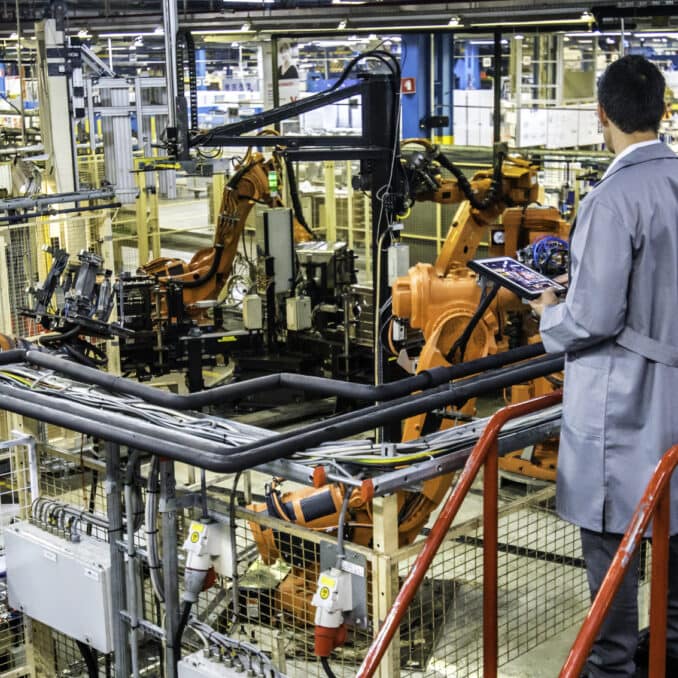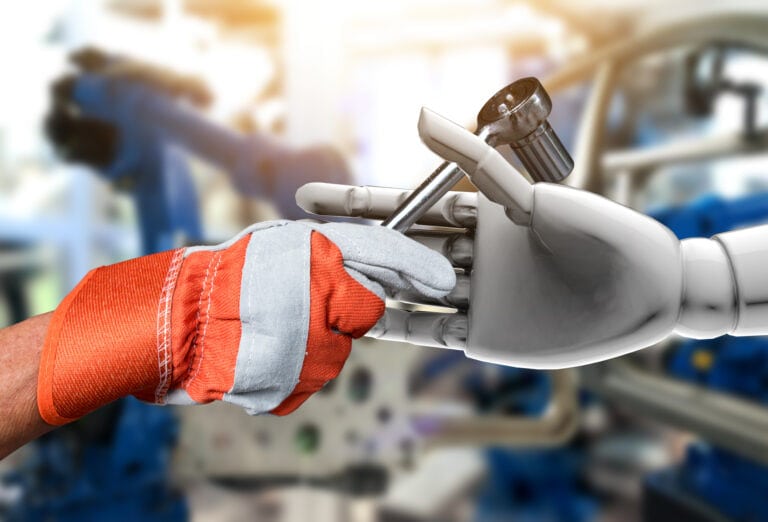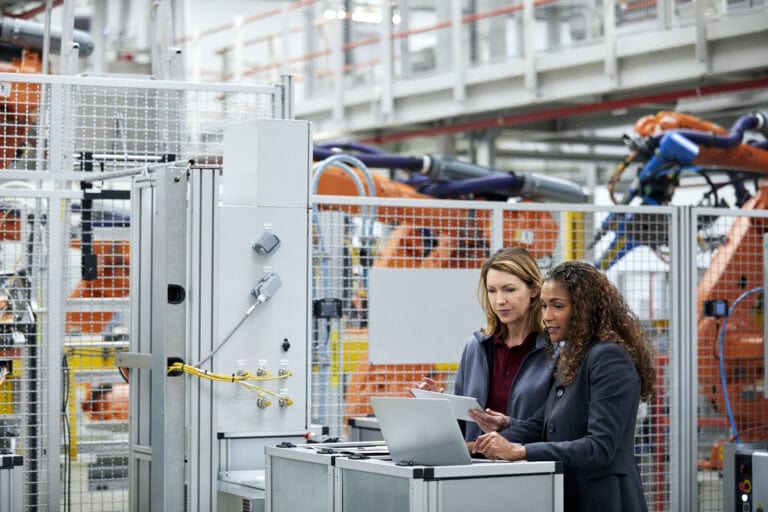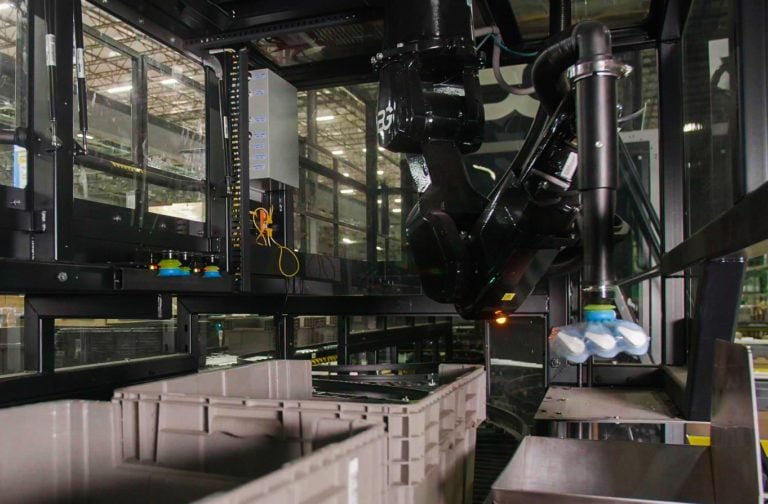Building a Better RFP: A Practical Guide to Choosing the Right Automation Partner
Investing in automation is a major decision – one that affects …


Technological advancements in robotic automation are both replacing redundant tasks and creating new roles for workers, but not eliminating work for people.
Technology has always had an impact on how we work, rest, and play. The connected society has brought this into sharp focus, even more so as we adjust to the new reality of a post-pandemic world. The integration of technology is an essential part of how humanity will evolve, and robots have always been at the forefront of not only conversation but also cultural anxiety.
The fact is that robotic systems are here and have been for decades. The good news is that they are not looking to replace humanity. And, depending on both your viewpoint and chosen profession, the automated workforce of the future is not only making a difference in a variety of business sectors, but it is also changing the way we work.
A recent research report by MIT said that intelligent or advanced machines and automation are a logical progression for industries that have been traditionally human as opposed to robot-centric. According to MIT’s “The Work of the Future: Building Better Jobs in an Age of Intelligent Machines,” the increased adoption of intelligent machines and the integration of them into the workplace is not only a business optimization strategy to be celebrated — but also one that can provide the average American worker with the skills and opportunities to meet the future.

Technological change is simultaneously replacing existing work and creating work, the authors of the report said, and it is certainly not eliminating work altogether. In addition, the so-called “momentous impacts of technological change” are happening gradually, with the pace of change incremental and tied to the “continuing diffusion of decades-old (though much improved) technologies of the internet, mobile and cloud computing, and mobile phones.”
All of these factors are allowing companies time to assess what is needed to improve the quality of the workforce and, importantly, helping them meet the challenges that innovation throws into the mix.
“History and economics show no intrinsic conflict among technological change, full employment, and rising earnings,” the MIT report said. “The dynamic interplay among task automation, innovation, and new work creation, while always disruptive, is a primary wellspring of rising productivity. Innovation improves the quantity, quality, and variety of work that a worker can accomplish in a given time. This rising productivity, in turn, enables improving living standards and the flourishing of human endeavors.”
Technology has always replaced some jobs, but the positions that have been impacted are often those that benefit hugely from companies augmenting their workforce with automated systems or processes.
The connected society has been the catalyst for change in the warehousing and fulfillment sector, for example, with eCommerce companies utilizing advanced robotic systems as co-workers rather than replacements.
If you think about the retail behemoths that dominate the online shopping space, then it is easy to imagine that their fulfillment and distribution centers are a whir of mechanized activity, but that is often not the case. Rather, automation works alongside the human employees and that status quo is unlikely to change anytime soon.
The caveat, the MIT report said, is that increased productivity — which the authors assign to the gradual introduction of robots in certain industries — has not kept pace with earnings or the levels of investment that companies consider to be impactful. In fact, the creation of “new work” rarely leads to the elimination of old working practices, with the authors noting that digitalization is, for the most part, still in a transitional phase.
“No compelling historical or contemporary evidence suggests that technological advances are driving us toward a jobless future,” the MIT Task Force said. “On the contrary, we anticipate that in the next two decades, industrialized countries will have more job openings than workers to fill them and that robotics and automation will play an increasingly crucial role in closing these gaps.”
For as long as robots have existed, there has been a feeling among the general populace that machines will one day replace a human workforce and, presumably, use the lessons learned to take over the world.

This irrational fear has become more widespread in the last decade or so and robophobia is not just an actual anxiety disorder but it is also one in which the person believes that intelligent robots are an inevitable consequence of evolving technology. The good news is that this disorder can be treated.
The idea of robots becoming more than just an effective and efficient worker is certainly something to consider. The problem is that the ability to adapt to a certain scenario that has not been pre-programmed or task-orientated is still beyond where the technology is today, and, while advanced robotic systems are impressive, they vary in terms of what they can do and the level of general intelligence that they display.
That is not to say that the pathway is fixed, and there is evidence that robots are getting smarter and more flexible. For example, some distribution and logistics leaders have already incorporated advanced systems into their working practices — autonomous trucks, for instance — but the MIT research team believes that the “grand visions” of a society dominated by robot workers remain mistaken.
Technologies, they said, have “their greatest impact, and create the most jobs, when they enable new business models and transform industries, more than automating tasks previously done by people.” And major technologies take around 40 years from invention to full adoption, with the team citing a recently published survey that showed that only 20% of warehousing or fulfillment centers are using automated packing solutions, collaborative robotics, or automated picking.
In fact, three key themes run through the report:
Firstly, artificial intelligence and robotic applications will take time to “develop and deploy.” They are coming, but not at the rate that people think.
Second, technology offers “mixes of job replacement and augmentation,” with some workers finding that robotic systems free them up to do less repetitive tasks. In the case of warehousing, logistics, or fulfillment, this will allow the company to provide a more efficient customer experience. Additionally, the companies that get the balance right will likely need to hire more people to deal with increased demand for their goods or services.
Finally, organizations will have a lot more influence on how technology is deployed in the workplace. This path to wider integration will link required change to the labor market and provide “opportunity, mobility, and a measure of economic security to the majority of workers.”

The potential applications of robotic systems and business impact on existing workforces should be front and center for business leaders and decision-makers. The overarching consensus from the research team was that automation will both solve pain points and create better jobs within the workforce itself.
“We possess the skills, resources, and innovative capacity to create many possible futures,” the report concluded. “Just as the majority of today’s jobs had yet to be invented a century ago, much of the work of the 21st century has yet to be invented today. The challenge and the opportunity of the present are to build the work of the future.”
Berkshire Grey’s holistic approach to advanced robotics systems, robotic automation, and subsequent integration into business optimization strategies is well-placed to serve the workplace of the future. Technology is often described as disruptive, but there is an argument that it actually evolves to fit the needs of the time, and the connected society is well-versed in what robotics can bring to life in general.
Do not fear the robot worker, rather embrace the technology that exists to augment the human workforce as the best path to follow. And Berkshire Grey is here to make sure that the path to enlightenment is brightly lit and easy to follow.
Investing in automation is a major decision – one that affects …
Will robot hands take over the warehouse? Of course not! Vacuum …
In a recent webinar, “Unlock $20M Savings with Superior Efficiency: Robotic …
Contact the BG Fulfillment Automation Sales Engineering Team to Learn How to:
Call +1 (833) 848-9900
or connect using our form.